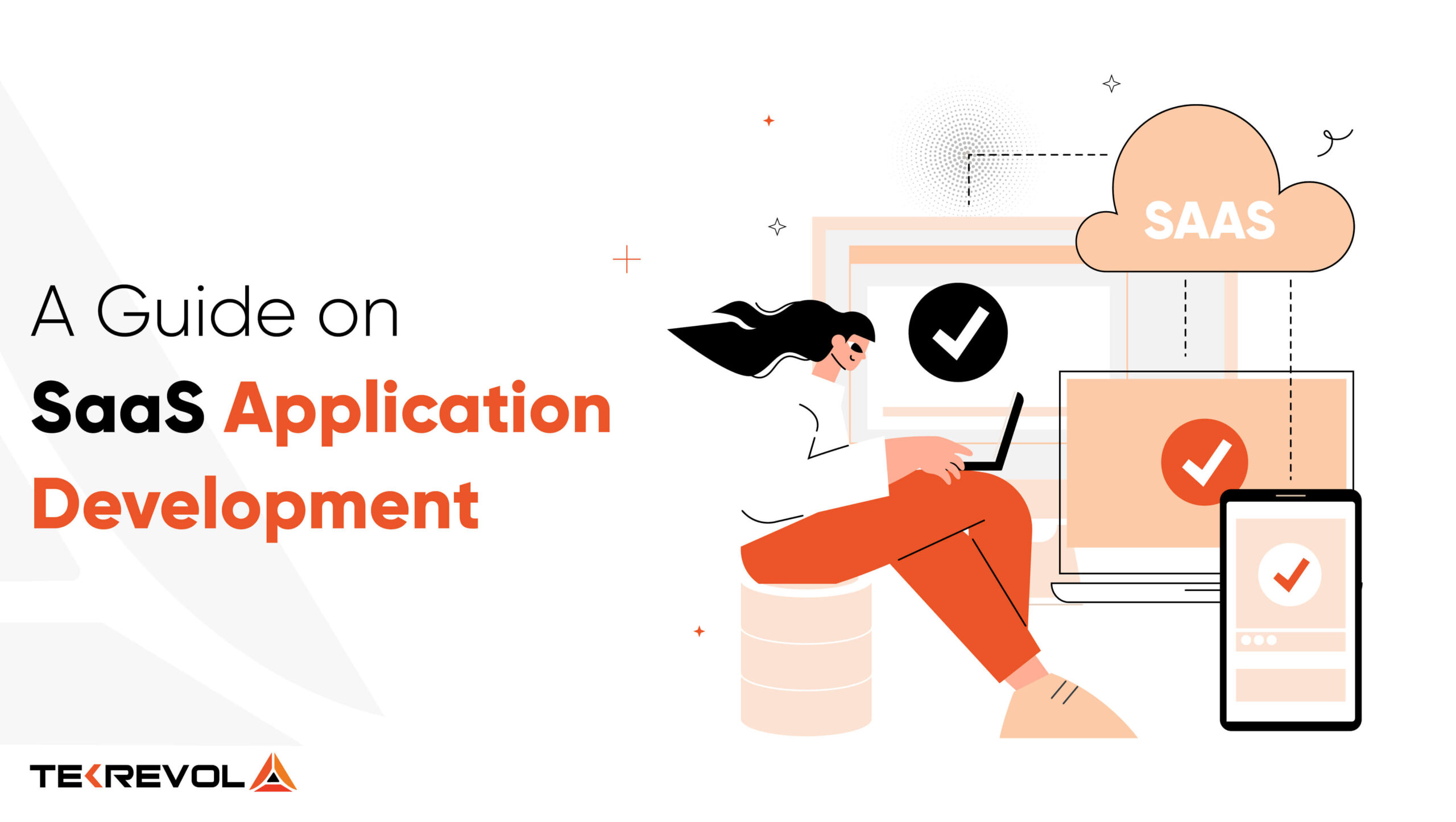Most reputable online programs like Canva, Pinterest, Trello and Etsy have become platform independent to provide a high-end user experience to their audience. And web app development has a primary role in this.
Progressive Web Apps, or simply web apps, as we’ll refer throughout the article, run on internet browsers. This technical nature of these apps is a competitive advantage for technopreneurs and aspiring appreneurs who want to build their epic ideas into digital realities with a limited budget, yet limitless opportunities for growth and scalability. Considering their growing demand, and the number of queries Tekrevol’s business analysts receive everyday about web app benefits, here is an updated 2025 guide covering everything including how to build web apps.
What is a web application?
A web application is a software program that runs on an internet browser. It is stored on a remote server, unlike desktop apps that are installed on local storage. Also called a Progressive Web App (PWA), it has multiple dynamic pages that allow interaction with end-user via profiles.
Considering their nature and technical architecture, web apps are platform independent and offer the same user experience on mobiles as well as desktop devices. All PWAs, especially mobile web apps are typically built using html5 and Java. They are affordable to build, ideal for idea havers who want to launch MVPs and take less time in development.
Website vs. Web App
A website has static pages and content and allow limited interaction with users. A web application has dynamic content and pages, have multiple user profiles and allow maximum interaction with users.
Read our article to learn how websites and web application are different.

How much does it cost to develop a web app?
A web app costs $25,000 for an MVP. A multi-feature, high magnitude web application development like Etsy and Canva can cost between $30,000 to $70,000.
No. of features and complexity of design are the primary factors that affect the cost of web app development. In the later sections, we have discussed these and 5 more factors in detail.
How long does it take to build a progress web application?
Web apps developers usually take 4 to 5 months to complete development. These are almost 350 to 500 development hours.
What are some benefits of web-based applications?
Businesses, developers to new appreneurs choose web app development for the following 5 reasons:
1. Platform independent and cross platform compatibility for users
Once your business has a web app, you don’t really need to worry about which device your target users own. Web applications offer wide accessibility and so have low acquisition cost – at least in the first few years of your app business when you don’t want to invest a limited amount and test the waters with your first launch. In fact, the web apps can be accessed simultaneously on different devices. This cross-platform compatibility adds to the user experience.

2. Reduced development costs
There are different types of web technologies but mobile web apps are typically built using html5 and java. Both of these are open-source and economical. And, there is a huge talent pool in the market offering these services on competitive rates.
3. Less local storage
Unless the app needs to saves caches on mobile apps or wants to process a lot of local device data, the web app doesn’t consume device memory. It is stored remotely, can be accessed with limited data and doesn’t require heavy connectivity for browsing on the go.
4. Automatic maintenance and updates
Web apps developers don’t have to prompt users to install a new app update. You don’t want your users to get annoyed as they see the dialogue box that forces them to install the updated version of the app – be it for their experience and convenience. Web apps allow developers to implement specific updates and fixes without bothering the users.
5. Secure live data
Web applications are not stored on local devices. Therefore, you can maintain the app security yourself. You don’t have to worry about your users’ devices and their security protocols. Instead, you need to implement all data security and privacy measures on the code of your app.
5 Cool Web Apps for UI and UX Inspiration
Here are 5 coolest web applications that have native mobile apps too – but they offer an entirely different user experience on their PWA presence:
1. Pinterest
Pinterest is a visual search engine. Users from different personal and professional walks use it for purposes like business marketing to binge watching to branding to engagement. It has dedicated profiles for individuals and businesses. Plus, it has comprehensive panels for data analysis. The app architecture is an exemplary application of machine learning. The platform processes user behavior and their browsing interests. Then, it shows relevant posts and ads to maximize return and boost engagement.

2. Spotify
One of the most popular offline music apps of all time, Spotify is home to millions of songs, podcasts and artist profiles. Users can access their personalized settings, playlists through their profiles on their desktops and mobiles on browsers.
3. Canva
The best designing tool for non-designers, Canva also has a progressive web application. For some users, the web app is just so much more accessible and intuitive than the native mobile app.
4. Netflix
The web app of online streaming service Netflix gives an entirely different, TV-like watching experience. while it has a desktop application for Windows 8, the web application is highly accessible and the go-to option if for some reasons you mobile app messes up.
5. Trello
Trello is a task management and organization application that allows synchronization amongst team members. It has interactive options like deadlines, attachments and so on. The mobile and web applications are both free and are widely used by professionals around the world.
Technology Stack Used for Building Web Applications
JavaScript
JavaScript is the only ideal solution for building web apps. It is the only web app programming language that can help build basic ecommerce to advanced smart home apps. While there are so many technical reasons behind this statement, let’s start with price. JavaScript is the most affordable option for building a web application. That’s because:
- JavaScipt is free and open-source.
- Skilled JavaScript developers can handle back-end and front-end development – altogether. So, you, as an app investor, appreneur or technopreneur, do not have to hire separate teams for front-end and back-end development.
- JavaScript is interoperable. The code can be used later when you plan to scale your web app to mobile applications for native Android or iOS.
After price and affordability, here are three technical reasons why you should choose JavaScript:
- All web browsers only support JavaScript as a scripting language.
- Java is used to build secure and scalable web applications. it is convenient to reuse the code written in JavaScript and developers don’t really have to start from scratch.
- JavaScript can communicate with a large number of systems. It helps access services like database connectivity and peer-to-web servers.
Frameworks used for Web App Development
- Top three front-end development frameworks include React, Angular and Vue.js.
- For back-end, tekrevol’s web app developers use Node.js.
Node.js
This is our favorite pick from the lot and is ideal for back-end and server-side development, especially when it comes to web app development. Not only a framework, but it now works as a complete environment that hosts diverse frameworks and toolkits.
Because it has its roots in JavaScript, it is highly compatible with all other different languages and frameworks that work with Java. Most importantly, Node.js works for web applications that need real-time communication between end users and servers. It has push capabilities, making it ideal for building social media to event-based applications.
Read this article to gain a deep understanding of why companies hire node.js developers and what they do.
How To Build Web Applications In 5 Steps
To give a not-so-technical guidance on the PWA development process, here is a quick 5 step guide:
1. Create a development strategy
This works as the guiding document before you start with development or even hiring a web applications developer. In this document, make sure to add a conceptual and technical brief. In the concept part, write down what you aim to achieve with your app. in the technical brief, you can add the languages you would like to work on and the features you want in your app. Other important things to add in your development strategy are the target launching month and year, costs you have allocated for web application development and the time you can dedicate to this project management.
2. Hire a developer
This is one of the trickiest parts of your web app development project. By now, you already know the languages and technologies you’ll need to develop your web app. To rewind, you need a JavaScript developer to handle the front-end and back-end development of your web app. if you want two different developers to work on your project, adding a specialized expert level Node.js developer will also pay.
When making a hiring decision, make sure your dream team has a designer, business analyst, project manager and tester on board along with lead technical developers.
Consider factors like location of the developer, their portfolio, their commitment to timelines and the contents of their non-disclosure agreement.
3. Design the app
Once you have hired the developer, it’s time to start with the technical procedures. After discovery and finalization of app scope, your designer will create app screens and get them approved by you. These designs are built upon for front-end development.
4. Complete front-end and back-end development
Front-end is the client side of the web application and interacts directly with the app user. Back-end is the server side of the app and requires major coding effort. This is the lengthiest stage in the development process, and the most crucial one. During this stage, make sure you follow up about updates with your developer, monitor the progress of your milestones, and ensure they are complete as per the deadlines.
5. Test the app
You and your QA team need to battle test the web app before it is out for users. During the testing phase, ensure that:
- The digital payment methods are working well,
- Sign up and sign in are smooth and error-free,
- The app doesn’t crash,
- The user experience: performance, navigation and intuition are blended,
- The app retains and secures personal and financial data of users.
What factors affect the cost of web application development?
Here are top 7 factors that web app developers and business analysts consider when estimating the cost of web application programming.
1. Scope and features
the scope is the primary goal of your app. It could be a problem your app is solving or the utility it provides to the users. Scope directly depends on the category and niche of your application. The scope then affects the features, their complexity and their number in the app.
Thumb of rule is, bigger the scope, more the features and higher the overall cost of web app development project.
2. No. of development hours
Developers and business analysts initially look at the technical brief of the app development plan. They consider the complexity of the application, decide features and then associate specific number of hours to each stage of development.
To derive the main part of the total web apps cost, you can multiply the no. of development hours with the hourly rate of your developer or development team.
3. Tools and technologies
Different development tools and hosting plans cost a good amount of money. While most developers don’t add the cost of custom software programs like wireframing tools, they might add material ones like cloud packages. Also, advanced tools like AR frameworks, machine learning databases and third-party APIs may also charge money at the time of integration. These also affect the overall price of a web app.
For reference, APIs, abbreviated Application Programming Interfaces are small apps and toolkits that allow two different apps to communicate data with each other. Developers use APIs to simplify the addition of specific features in the app. for example, they use specific APIs to add digital payment methods, rather than developing new payment gateway. Google Places and PayPal API are quick examples of such apps that reduce the development time and effort.
4. Process of development
The overall process of Web development Company’s comprises different stages like discovery, design, back-end development, front-end development, API integration, testing, and maintenance. All these stages have different allocations from the overall cost.
For reference, hiring a different developer or team for each stage costs more when combined, as compared to hiring a full-cycle development project. If full-cycle development seems to be an expensive option, you can choose from different hiring models like remote teams or IT staff augmentation. Both of these arrangements provide different levels of control on the progress of your project as well as different development hours.
5. Complexity of design and development
If your progressive web app is an extension of a native Android or iOS application, your designer might have to spend less time on the user journey and navigation, the UI and UX of the application. Same goes for web applications that are inspired by other apps, but tend to make a difference through cost or time.
To build a web app from scratch, you definitely need to perform the wireframing and prototyping steps, then convert them into app screen designs and then go for front-end development.
Similarly, if different features in your app can be completed conveniently with APIs, the app is less complicated to develop. On the other hand, if you want to build a web app from scratch on a new technical infrastructure, you’ll need more development hours – affecting the overall cost.
To manage the cost, Tekrevol’s web apps developers usually suggest you first create an MVP (Minimum Viable Product) and then scale it for full functionality.
6. App security
This is one of the most important concerns when building web applications. This is highly important for web apps because they are not stored on the local storage of a smartphone or desktop – but on remote computers often connected on cloud.
web applications hosted on HTTPS are more secure than HTTP. Another important factor for app security is their end-to-end encryption. To ensure end to end encryption, web app developers use different models that cost money. they conduct penetration tests (also called ethical hacking attempts) – and they are somewhat expensive because of their procedure and instruments.
7. Side costs
Side costs are often the optional measures you want to take during the process of web app development. Some side cost centers include patent, app performance monitoring, marketing and maintenance. While all of these might not be needed at the time of development, you may, in future want to opt for these – like app store optimization and maintenance and updates.
Wrapping Up…
So, this comprehensive web app development guide comes to an end – but it is definitely the start of a great business venture or a scalability step. Web apps offer business viability, are platform independent and a step towards entrepreneurial freedom because are relatively economical.

- Looking for a web app?
- The right development team can make all the difference. Get in touch with us and estimate the cost of web app development in as quick as 1 hour. Are you ready for your new profitable app venture? We are!

 3328 Views
3328 Views February 15, 2025
February 15, 2025









